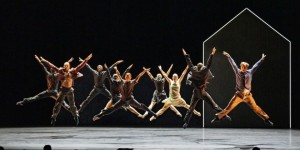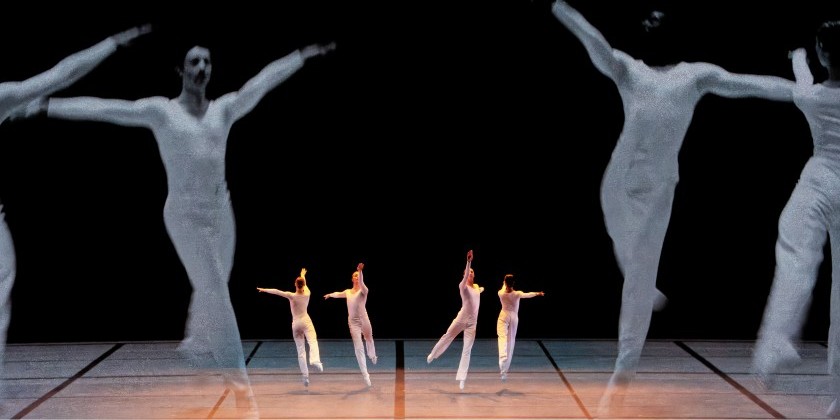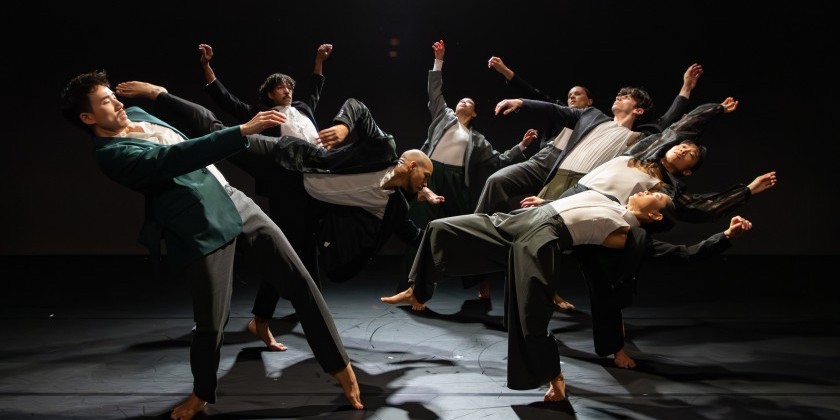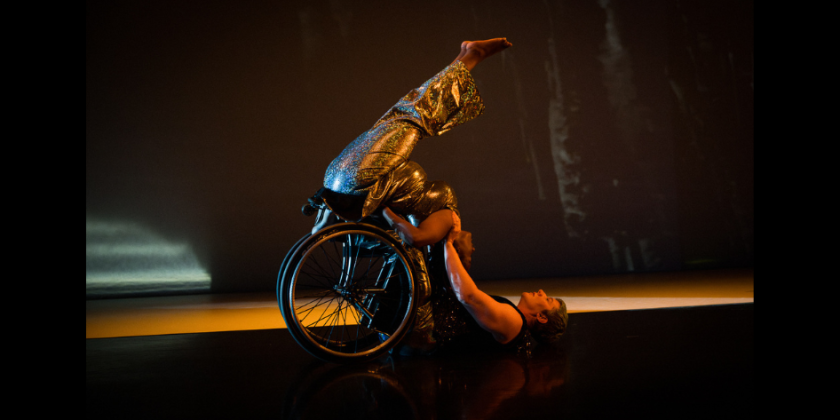IMPRESSIONS: Gibney Company's 2025 Season at The Joyce Theater

Founder, Artistic Director, CEO: Gina Gibney
Company Director: Gilbert T. Small II
Executive Producer: Karen Kitchen
Associate Producer: Anastasia Gudkova
Company Manager: Erin McElhone
Featured Choreographers: Roy Assaf, Peter Chu, and Lucinda Childs
Artistic Associates (Performers): Graham Feeny, Madison Goodman, Tiare Keeno, Lounes Landri, Andrew McShea, Jie-hung Connie Shiau, Zack Sommer, Madi Tanguay
May 6 - 11, 2025
Earlier this month, the Gibney Company presented an evening of three new works at The Joyce Theater, featuring renowned choreographers Roy Assaf, Peter Chu, and Lucinda Childs. The choreographers presented a diverse and highly anticipated bill, filled with complex storytelling and physical genius, but it was the Gibney Company dancers who truly carried the show to greatness.
First on the program was Roy Assaf’s A Couple, an excerpt from the longer work Figure No. 16, a 60-minute piece developed in collaboration with Ariel Freedman and Avshalom Latucha. On Wednesday, May 7th, this duet was performed by Graham Feeny and Zack Sommer, although it had several different casts throughout the run. What didn’t change each evening was the opening, a monologue spoken into a downstage microphone by company member Madi Tangusy. Replacing the usual pre-show “silence your cell phone” announcement, Tangusy, with a deadpan delivery, urged the audience to quell their desire to use their phones by practicing a simple pelvic floor exercise. This humorous approach relaxed the audience, which effectively set the stage for the upcoming duet.

Feeny and Sommer then danced the duet in three sections, each one distinct in movement vocabulary, yet tethered by their complicated relationship to one another. Text written by Freedman overlaid the second movement: “Perhaps you are a couple. Perhaps you are lifelong friends, perhaps soulmates, perhaps you have history, perhaps you had an affair, perhaps you once fought together for a greater purpose, perhaps you fight every day over little things but share a love that survives them all.”
Moving briskly through the space, the dancers changed shape and dynamics with every beat, the cacophony of it all stitching them closer together in time and space. The most compelling moment came in the third duet when Sommer jumped backward into Feeny’s arms, yelling “Graham!” In that moment, as Sommer was caught and slowly lowered, we saw the dancers not as performers, but as themselves – vulnerable to each other and us. Throughout his work, Assaf gave room for humor as well as depth of connection, crafting a complex yet generous world for the audience to connect with.

The world premiere of Peter Chu’s Echoes of Sole and Animal, arguably the strongest piece on the program, followed. Captivating and meticulously crafted, it featured the entire Gibney Company, showcasing each dancer’s physical range and acting skills. Throughout the work, dancers oscillated between human and animal forms. As bipeds, they flung themselves through vigorous footwork and partnering, then just as quickly transitioned into daring quadrupeds with their shoes on their hands, pedaling through four “feet” as if stalking prey.

Chu leaned into the sonic realm of the piece both with a rich score by Djeff Houle and the use of floor microphones. These mics amplified the sound of the hard-soled shoes the dancers wore and intentionally distorted the sound in echo, helping to shape the work’s greater environment. As Echoes of Sole and Animal” continued, these mics became more than just tools for atmospheric sound. Soloist Jie-hung Connie Shiau peeled one from the floor and began vocalizing into it. Shiau’s performance was nothing short of spectacular, and her commitment to every moment was palpable. Even her slow-motion walk in a moment of chaos on stage captivated attention as everything else became a blur.

Closing out the program was the world premiere of Three Dances (for prepared piano) John Cage, choreographed by Lucinda Childs. The work was technically immaculate, showcasing the range of the Gibney Company dancers as they transformed impressively from ferocious animals to rhythmic precisionists. As the title suggests, this work consisted of three short sections performed by the eight-member Gibney Company. The first section ebbed and flowed with formation changes that played on John Cage’s defined musicality. The dancers channeled their clear, meticulous ballet training as they floated across the stage, hitting every mark with grace. The second section featured four duets that played with speed and timing. Spotlights illuminated each couple as they moved through balletic forms with a contemporary twist. Finally, the third section transitioned from a close-knit formation into rhythmic outbursts, always bringing the dancers back to the center.

While each section of Three Dances (for prepared piano) John Cage proved to be a significant technical feat, this work tested the endurance of both the dancer and the audience. Perhaps if it had been placed in the middle of the program, it would have resonated more. Ultimately, Lucinda Childs’ work remains relevant today due to its ability to push dancers to a level of precision and craft that is hard to come by; however, as a closing piece, it felt challenging to remain engaged with.

Under the artistic direction of Gina Gibney and company director Gilbert T. Small II, the Gibney Company remains a leader in the field, with dancers whose range and versatility are difficult to match. Additionally, the company’s commitment to artistic leadership through advocacy work is admirable and serves as a model for other twenty-first-century dance companies. Still, as a nascent company in its formative years, it could greatly benefit from taking more risks with its choreographic commissions. I look forward to seeing what else is in store for the Gibney Company as it continues to grow and shape the field.












